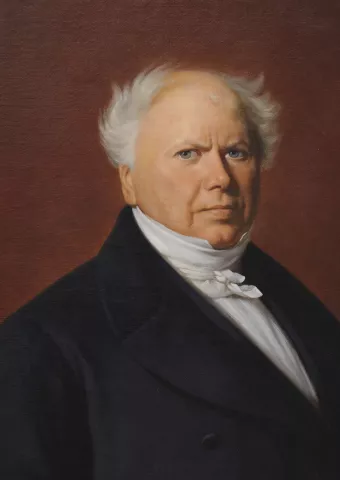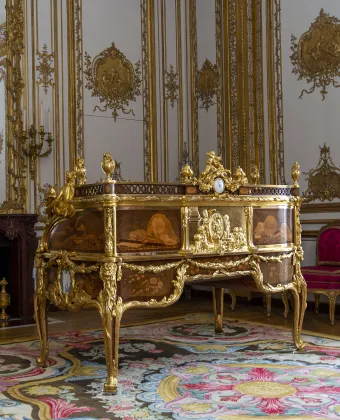Having worked as an architect at Versailles from 1832, Nepveu’s hour of glory came with a commission from Louis-Philippe, King of the French, for the creation of his museum dedicated to the glory of France in 1833, inaugurated in 1837 and completed in 1848. The work was directed by Pierre-François-Léonard Fontaine (1762-1853), former architect to Napoleon and Louis XVIII, and architect to Louis-Philippe when he was crowned king in 1830.
The two men created the Gallery of Great Battles in the South Wing of the Palace, where the former Princes’ Apartments once were, and designed it based on the Grande Galerie in the Louvre.
They presented the history of France through 33 paintings of the greatest battles, from Tolbiac in 496 to Wagram in 1809, in accordance with the spirit of the museum, which was dedicated to “all the glories of France”.
The gallery, 120m long and 13m wide, was also decorated with 82 busts of the most famous French military officers and 16 bronze tables mentioning all those who had contributed to the military greatness of France.
On a similar theme, in the State Apartments in the North wing on the ground floor of the central part of the palace, Nepveu created a succession of historic rooms featuring the greatest figures and the most important events from the history of France. He carefully noted the existing condition of the rooms beforehand, which helped restore certain spaces in the late 19th and during the 20th centuries. Although the creation of the Gallery of Great Battles led to the definitive loss of the apartments in the South Wing, the State Apartments could nevertheless be restored to their original condition in the 18th century. So too, between 1980 and 1986, were the Dauphine’s and the Dauphin’s Apartments and the Mesdames’ Apartments belonging to Louis XV’s daughters, situated on the ground floor. Pierre de Nolhac, the museum’s curator from 1892 to 1919, was fiercely opposed to the monotony of the museum and was the driving force behind the restitution of the historic composition.
Nepveu was a student of the architects Antoine-François Peyre and Charles Percier, and very little of his work is known except for that accomplished in Versailles and Compiègne. In 1834 he was awarded the French Legion of Honour, and in 1814 and 1819 he designed two projects for public libraries in Paris. In 1852 he designed the Réunion du Louvre and the Tuileries based on the grand plan by Napoleon III. These projects, however, never came to fruition.















